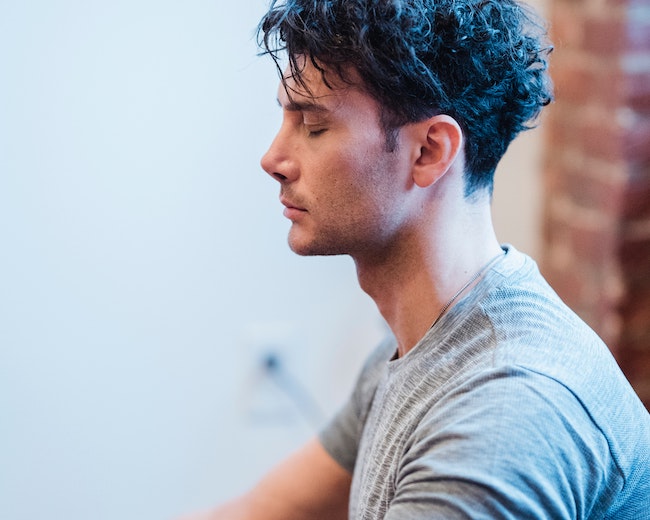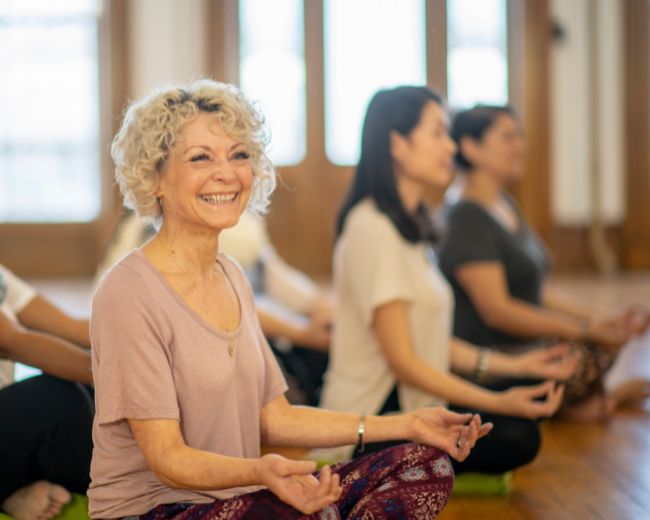When we stand in front of a class we’re teaching people, not poses. People with unique bodies; varied energy levels and life experiences; and who have different needs and various reasons for coming to class. We need to provide some options and recognise that our job as a yoga teacher isn’t to tell these individuals what to do; it’s to support them to make intelligent, mindful choices. Using invitational language in yoga is a great way to empower students to make their own decisions.

What is Invitational Language?
Invitational language invites our students reflect and follow the path that feels right to them, rather than directing their every action.
It often starts with phrases such as:
- You might like to…
- I invite you to…
- You could choose to (do A) or (take B)
- If it feels good in your body…

How to Use Invitational Language in Yoga
Some great times to incorporate invitational language are when:
You’re Offering a More Challenging Option
Instead of a traditional cue such as “For a more a challenging option, close your eyes” you could say something like, “If you’re feeling stable, you might like to try closing your eyes”.
Rather than “If you can, enter the full expression of the pose by xxx” try “This is a beautiful place to stay. Only if you’d like to explore yyy (eg. a deeper stretch in your hamstrings) you can xxx.”
You’re Offering Two Equally Valid Alternatives*
(*and aren’t all alternatives equally valid?)
Instead of “Take a vinyasa, or rest in child’s pose if you need to” how about “If you’d like to build more heat, you can move through a vinyasa. If you’d prefer to calm and centre yourself, move into Child’s pose.”
You’re Inviting Students to Move Deeper into a Stretch
Rather than “Exhale and walk your hands forward” consider “Notice what you’re feeling. Where are you encountering resistance, and what’s the quality of that resistance? This sensation might feel like plenty. Only if you want to increase the intensity, walk your hands forward.”
You’re Inviting Students to Explore Alignment
In Downward dog, instead of imposing a specific stance you could invite students to explore the length of their dog: “You can try walking your feet a bit further back to find a deeper stretch through your calves. Alternately, walking your feet in slightly closer can give more stability and a sense of being grounded. Find the length that feels right in your body today.”
You’re Inviting Students to Explore Different Activation
In Virabhadrasana II, play with activation of different muscles: “Squeeze your feet towards each other and feel your hamstrings engage. Now stretch the mat between your feet and feel your quads working. Play with the two sensations until you sense what feels strong and supportive.”
As Bernie Clark says,
The greatest gift a teacher can give a student is to teach the student to become her own teacher.
By inviting students to reflect and providing them with various options they can choose based on how they’re feeling, we can educate them over time. We can give them the tools they need to pilot their own plane.
Do I Need to use Invitational Language All the Time?
No. Imagine trying to teach Surya Namaskar (“You might like to stand in Tadasana at the front of your mat. If it feels good in your body, inhale and reach your arms up. You could choose to exhale and fold forward…”). Nope. When we’re flowing, we need an economy of words. Choose your moments intelligently.
Looking for more techniques to inform and empower your students? Check out this post on self-adjustments.






I love your insights. Thank you.
Thanks Natalie! So nice to hear from you – I hope your teaching is going well. x